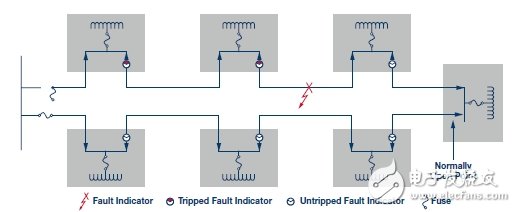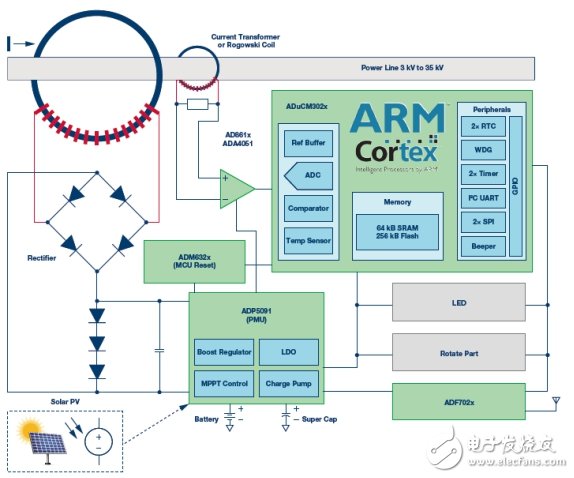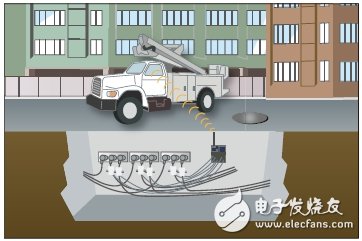Today, with the ever-changing energy landscape, power outages still cause disruptions to key operations, such as production processes, resulting in huge losses. In addition, some older grid equipment is still operating around the world, and in some areas, electricity storms are becoming more common. Faced with these severe challenges, utilities can take a variety of approaches to address the risk of future service disruptions, including modernizing distribution networks, distributed distribution networks, and hiring more line maintenance personnel. All of these methods are complex and difficult to assess due to varying degrees of cost, technical risk and social benefits.
The power company's recent focus is on arranging, hiring, and training more line maintenance personnel to improve the power outage response and provide better service to customers. But in many parts of the world, the aging of the workforce is a well-known problem, and it is increasingly difficult to find a skilled workforce to fill the line gap. In response to issues such as extended power outages, customer dissatisfaction, and possible government intervention, power companies need better solutions. The above problems will undoubtedly be greatly improved if they can improve the efficiency of line personnel, shorten the time for search disconnection, and allocate more time to actual maintenance work and high-priority maintenance tasks.
Capturing data at the grid node is keyIn the past few years, long-term power outages have occurred in many countries and regions simply because it is difficult to find a source of failure. But how should power companies improve their distribution network architecture to better respond to power outages? The answer is to use more advanced line sensor technology to reduce system cost and deploy it to more nodes in the power infrastructure. This technology is highly integrated, which helps to improve measurement accuracy, reduce power consumption, and reduce maintenance workload.

Figure 1. Node monitoring system called fault indicator
One of the most common application scenarios for new line sensors is a node monitoring system called a fault indicator that detects and sends an alarm when a line fault occurs, allowing the line staff to troubleshoot the faulty device in the shortest amount of time. Figure 1 shows the fault indicator used on the distribution line. Different regions and different vendors have different names for the system, such as line monitors, fault monitors, fault circuit indicators, and so on. This document uses the generic term fault indicator to refer to the system and uses line sensors to refer to the underlying technology used to detect the physical state of the power line.

Figure 2. Line sensor for detecting the physical state of the power line
2 Next-generation line sensors: collecting power, interconnecting, and reducing maintenance workloadIn underground cable type fault indicator applications, the fault indicator is located at the cable termination of each main cable. The indicator upstream of the fault trips and the indicator downstream of the fault remains in the non-trip position. This allows the service team to easily identify faulty parts of the cable or equipment without the need for time-consuming fault isolation. The underground cable type fault indicator applications include transformers, switchgear, cabinets, junction boxes, splices, and the like.
In an overhead fault indicator application, a prominent display on the fault indicator directs the line staff to the location of the problem. The overhead fault indicator applications include fuseless taps, long feeders with neutral reclosers, zoned switchgear, changeovers, feeders, and more.
Existing fault indicators face two major challenges: 1) high volume procurement costs; 2) frequent maintenance required to function properly. Power companies have limited budgets and resources. In the face of high cumulative procurement costs and extensive recurring maintenance work, it is often impossible to deploy more fault indicators in a large power infrastructure.
Improve fault indicators with more advanced power managementTo address these challenges, Analog Devices has developed a new line sensor architecture for fault indicators that efficiently collects power with less maintenance (Figure 3).

Figure 3. Fault indicator design for collecting electrical energy
The basic function of the fault indicator for collecting electrical energy seems simple, but the design is quite complicated, especially the power architecture. There are not only three independent power sources (power line sensors, rechargeable batteries and super capacitors), but also a control algorithm to balance changing power conditions and varying load conditions – all designed to ensure always-on networking . The key innovation is a new multi-power path design technology that enables faster startup, lower power consumption, and smoother operation. By using better power management, the frequency of battery replacement is reduced, the number of line staff performing system checks is reduced, and the maintenance required for the fault indicator is reduced.
The new fault indicator design also leverages more sophisticated data collection techniques and more robust wireless communications to improve performance. Power line information is collected by high speed precision converters at data rates well above the power line frequency, which captures more accurate data. The integration of short-wave radios and wireless communications such as the GSM protocol can also extend the coverage of these devices. The fault indicator can transmit data and report its status so that the line staff can reduce the time it takes to search for a fault and thus have more time to troubleshoot.

Figure 4. Reporting the status of the underground fault indicator to the ground personnel
Big data analytics is possible to achieve higher energy intelligenceFault indicators using advanced line sensor technology provide an opportunity for utilities to transform their operations. By collecting data at nodes with higher accuracy, better networking capabilities, and lower maintenance costs, utilities can identify and respond to power outages more quickly and with greater confidence. Not only that, but there are more possibilities to consider. For example, all fault indicators in a single area provide historical data and alerts, allowing utilities to apply machine learning algorithms and big data analytics to improve line worker productivity, reduce operating expenses, and achieve better results. Business performance.
ConclusionPower company customers will still experience long power outages due to the difficulty of locating the source of the problem. One way to address this dilemma is to use fault indicators more widely. However, today's fault indicators have two major drawbacks: bulk purchases are costly and require regular maintenance.
The new line sensor technology for fault indicators overcomes these challenges, enabling efficient power harvesting with minimal maintenance. In the future, power companies can use a new generation of fault indicators to reduce power outages, reduce operating expenses, and make customers more satisfied.
Array Speakers,Waterproof Loudspeaker,Line Array Speaker,Linear Array Loudspeaker
NINGBO SANCO ELECTRONICS CO., LTD. , https://www.sancobuzzer.com